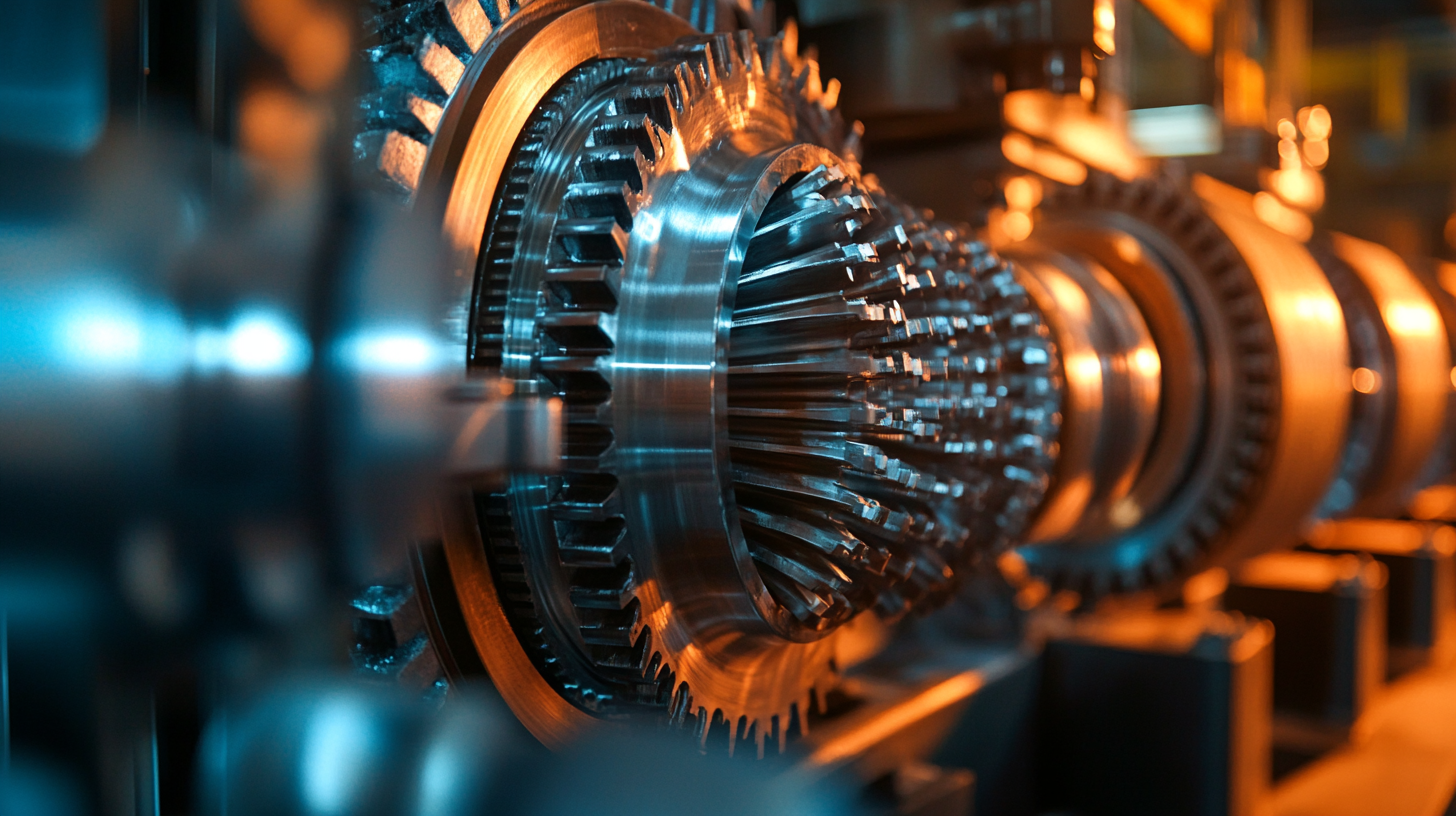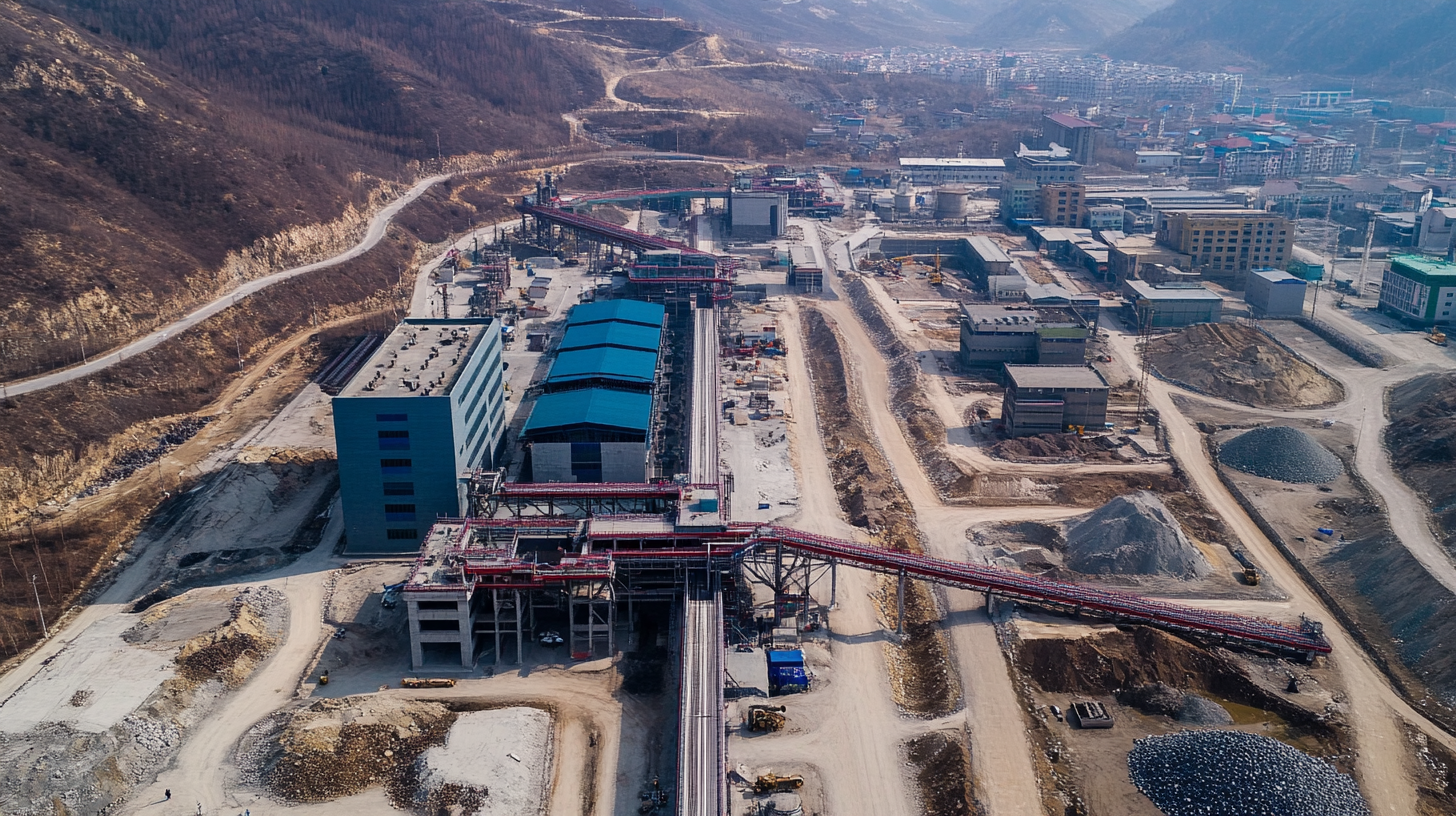
-
Home
-
About Us
-
Products
-
News
-
Blog
-
Contact Us
Leave Your Message

In the wake of escalating trade tensions between the United States and China, many sectors have faced significant challenges, yet the cone crusher manufacturing industry in China has demonstrated remarkable resilience and growth. This blog explores how Chinese manufacturers have not only withstood the adverse effects of tariff impositions but have also leveraged innovation and cost-effective production strategies to thrive amidst adversity. As cone crushers play a pivotal role in the mining and aggregate industries, their continued production under challenging circumstances points to a broader trend of adaptability and strength within China's manufacturing sector. We will delve into the specific measures that manufacturers are adopting to overcome tariff hurdles, enhance product competitiveness, and maintain momentum in an increasingly turbulent global market. Through a detailed examination, this blog aims to shed light on the factors contributing to the robust growth of cone crusher production in China, despite the backdrop of ongoing geopolitical tensions.

China's cone crusher market has demonstrated remarkable resilience despite the ongoing challenges posed by US-China tariffs. The manufacturing sector has adapted to these external pressures by refining production techniques and enhancing product quality. As a result, many Chinese manufacturers are not only maintaining their market share but also expanding their reach into various international markets. This adaptability reflects a broader trend in the Chinese manufacturing landscape, where innovation and cost efficiency are becoming critical success factors.
Tips: For industry stakeholders looking to thrive in this competitive environment, investing in research and development is vital. By focusing on innovative designs and improved functionalities, companies can differentiate themselves from their competitors. Additionally, building strong relationships with suppliers and exploring new materials can lead to lowered production costs while maintaining high standards of quality.
Furthermore, as the global demand for mining and construction equipment continues to rise, Chinese manufacturers of cone crushers are increasingly tapping into sustainable practices. By prioritizing energy efficiency and eco-friendly designs, these manufacturers not only meet regulatory requirements but also appeal to a growing segment of environmentally conscious consumers. Exploring partnerships with technology firms can strengthen this focus on sustainability, leading to new product developments that resonate with modern market demands.
The impact of US-China tariffs on manufacturing and trade dynamics has become a critical area of study, especially in sectors like machinery and equipment where companies are navigating complex international trade policies. According to a report from the International Trade Administration, the imposition of tariffs has led to a significant increase in the cost of imported machinery, with tariffs on certain categories reaching levels as high as 25%. This has compelled many manufacturers to reconsider their supply chains and pricing strategies, further influencing market dynamics.
In the cone crusher manufacturing sector, Chinese firms have shown remarkable resilience despite these challenges. Data from Research and Markets indicates that the global cone crusher market is projected to reach $2.64 billion by 2026, growing at a CAGR of 3.1%. Chinese manufacturers, leveraging their cost-effective production capabilities and advanced technologies, are not only sustaining their market share but are also expanding into new regions. This adaptability highlights their commitment to maintaining competitiveness in a fluctuating economic landscape, positioning them as key players in the global manufacturing arena.

In the face of mounting US-China tariff challenges, Chinese manufacturers in the cone crusher sector are deploying strategic resilience measures to sustain their growth. Drawing parallels with Japan's recent pivot towards sodium batteries, which underscores the importance of supply chain adaptability, Chinese manufacturers are increasingly focusing on diversifying their supply sources and optimizing production processes. According to recent reports, nearly 60% of Chinese companies are investing in localizing their supply chains to mitigate risks associated with global disruptions.
Moreover, the China+ strategy emphasizes the significance of cross-border restructuring, fostering collaboration with countries beyond traditional supply partners. This strategic shift not only aims to enhance supply chain resilience but also addresses the growing concerns of foreign investors reassessing their positions amid geopolitical tensions. As companies navigate through the complexities of global supply chain dynamics, a recent survey indicated that 65% of firms in the manufacturing sector are prioritizing diversification to maintain operational efficiency while managing cost pressures. By embracing these strategies, Chinese cone crusher manufacturers are well-positioned to adapt and thrive amidst ongoing challenges.

Amidst the ongoing US-China tariff challenges, China's cone crusher manufacturing sector has demonstrated remarkable resilience and adaptability. With a projected market growth rate surpassing 5.6% CAGR from 2025 to 2032, technological innovations in production are at the forefront of this development. Manufacturers are leveraging advanced automation and precision engineering techniques to enhance operational efficiency and reduce costs, catering to both domestic and international markets.
In recent months, the crushing and screening technology segment has seen a surge in new model launches, further fueling production capabilities. Companies are innovating around materials and processes, ensuring that they remain competitive despite economic pressures. For instance, the growth of the crusher backing materials market is expected to increase from USD 27.08M in 2025 to USD 41.12M by 2035, illustrating a focused demand for high-quality components in this space.
**Tip:** Invest in upgrading your existing equipment with the latest technology to improve efficiency and reduce maintenance costs. Staying ahead of the curve in technological advancements can ensure better performance in a competitive marketplace.
| Year | Production Volume (Units) | Export Volume (Units) | Tariff Rate (%) | Innovation Index (1-10) |
|---|---|---|---|---|
| 2018 | 50,000 | 30,000 | 10 | 7 |
| 2019 | 55,000 | 35,000 | 15 | 8 |
| 2020 | 60,000 | 40,000 | 20 | 9 |
| 2021 | 65,000 | 45,000 | 25 | 9.5 |
| 2022 | 70,000 | 50,000 | 30 | 10 |
| 2023 | 75,000 | 55,000 | 35 | 10 |
China's cone crusher industry continues to thrive despite the ongoing trade tensions with the U.S., showcasing remarkable resilience and innovation. According to a recent report by Market Research Future, the global cone crusher market is projected to reach approximately $2.4 billion by 2026, with a compound annual growth rate (CAGR) of 5.7%. This growth provides a fertile ground for Chinese manufacturers to capitalize on their advanced technology and competitive pricing, allowing them to expand their market share even in a challenging global environment.
As the industry adapts to international dynamics, there are essential tips for stakeholders looking to navigate this landscape. First, investing in research and development is crucial. Companies that prioritize innovation can enhance product efficiency and performance, making them more competitive. Second, focusing on sustainability can open new avenues for growth, as global demand shifts towards eco-friendly manufacturing practices. Lastly, forming strategic partnerships with global distributors can increase market reach and facilitate entry into new regions.
The future of China's cone crusher industry appears promising. As infrastructure projects accelerate globally, particularly in developing regions, the demand for high-quality crushing equipment is set to rise. Chinese manufacturers are well-positioned to capture this demand, leveraging their robust production capabilities and technological advancements to meet the needs of a diverse market.